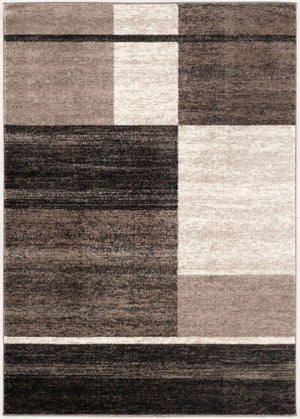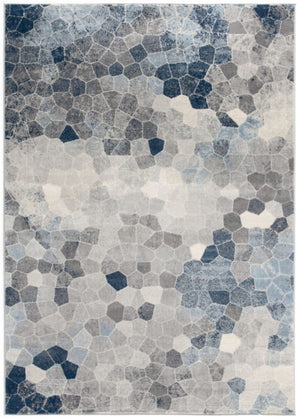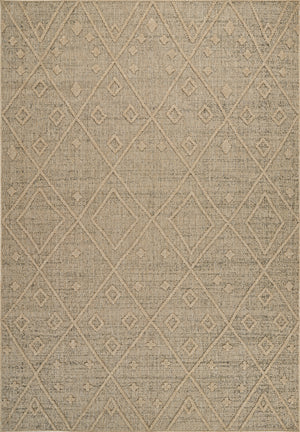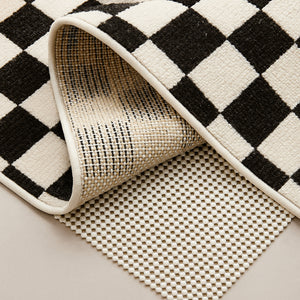
Les tapis sont-ils mauvais pour la santé ?
Share
Les tapis sont un choix populaire pour la maison, apportant chaleur, confort et style à n'importe quelle pièce. Cependant, nombreux sont ceux qui se demandent s'ils présentent des risques pour la santé. Les inquiétudes concernant les allergies, les problèmes respiratoires et la qualité de l'air intérieur sont souvent évoquées lorsqu'on parle de tapis. Dans cet article, nous explorerons les impacts potentiels des tapis sur la santé, les types de tapis qui peuvent minimiser ces risques et comment les entretenir correctement pour préserver un environnement de vie sain.
Que vous envisagiez d'acheter un nouveau tapis ou que vous souhaitiez vous assurer que vos tapis actuels sont sans danger pour votre famille, nous avons ce qu'il vous faut. Nous aborderons des sujets importants tels que les tapis et les allergies, les tapis non toxiques pour la maison et comment nettoyer les tapis allergiques pour vous aider à prendre des décisions éclairées.
Comprendre l'impact des tapis sur la qualité de l'air intérieur
Comment les tapis peuvent affecter la qualité de l'air
Les tapis peuvent jouer un rôle important dans la qualité de l'air intérieur de votre maison. S'ils aident à retenir la poussière, la saleté et les allergènes, ils peuvent également libérer ces particules dans l'air s'ils ne sont pas correctement entretenus. Au fil du temps, les tapis accumulent la poussière, le pollen, les squames d'animaux et d'autres polluants, ce qui peut affecter la qualité de l'air de votre maison et potentiellement entraîner des problèmes respiratoires.
Cependant, tous les tapis ne nuisent pas à la qualité de l'air. Choisir les bons matériaux et les nettoyer régulièrement peut améliorer la qualité de l'air de votre maison et même avoir des effets bénéfiques sur votre santé.
Poussière, allergènes et polluants dans les tapis
Les tapis sont connus pour piéger les allergènes comme les acariens, le pollen et les squames d'animaux. Ces allergènes peuvent s'accumuler et se propager dans l'air lorsqu'on les déplace, aggravant ainsi des affections comme l'asthme, les allergies et autres problèmes respiratoires. Les tapis qui ne sont pas nettoyés régulièrement peuvent contenir des polluants nocifs, contribuant ainsi à une mauvaise qualité de l'air intérieur.
Si vous êtes préoccupé par les allergènes, pensez à investir dans des tapis hypoallergéniques ou fabriqués à partir de fibres naturelles comme la laine, le coton ou le jute. Ces matériaux sont moins susceptibles de piéger les allergènes et plus faciles à nettoyer, ce qui en fait une option plus sûre pour les personnes allergiques ou sensibles.
Problèmes de santé courants liés aux tapis
Allergies et problèmes respiratoires
L'une des préoccupations les plus courantes concernant les tapis est leur lien avec les allergies et les problèmes respiratoires. Ils peuvent piéger les acariens, les squames d'animaux et d'autres allergènes qui déclenchent des symptômes chez les personnes sujettes à l'asthme ou aux allergies. Les personnes souffrant d'hypersensibilité sévère peuvent constater que certains matériaux de tapis aggravent leurs symptômes.
Pour minimiser ces risques, choisissez des tapis hypoallergéniques ou spécialement conçus pour résister aux allergènes. De plus, passer régulièrement l'aspirateur et nettoyer en profondeur peut contribuer à réduire la présence d'allergènes dans votre maison.
Irritation cutanée due aux matériaux des tapis
Certains matériaux synthétiques utilisés dans les tapis, comme le nylon ou le polyester, peuvent provoquer des irritations cutanées, notamment chez les personnes à la peau sensible. Les produits chimiques utilisés dans la fabrication des tapis synthétiques peuvent également libérer des composés organiques volatils (COV), susceptibles de contribuer à des problèmes respiratoires ou d'aggraver les allergies.
Opter pour des tapis en fibres naturelles comme la laine, le jute ou le coton peut contribuer à atténuer ces problèmes. Ces matériaux sont plus doux pour la peau et exempts de produits chimiques agressifs, ce qui en fait un choix plus sain pour votre maison.
Choisir des tapis plus sains
Tapis hypoallergéniques et non toxiques
Si vous ou un membre de votre famille souffrez d'allergies, investir dans des tapis hypoallergéniques est un choix judicieux. Ces tapis sont conçus pour résister aux allergènes et sont souvent fabriqués à partir de matériaux naturels qui ne libèrent pas de produits chimiques nocifs. Les tapis non toxiques sont également parfaits pour les foyers avec des enfants ou des animaux domestiques, car ils minimisent l'exposition à des substances potentiellement nocives.
Fibres naturelles ou fibres synthétiques : lesquelles sont les plus sûres ?
Pour choisir un tapis, vous devrez choisir entre des fibres naturelles et des fibres synthétiques. Les fibres naturelles comme la laine, le coton et le sisal sont généralement plus sûres et plus respectueuses de l'environnement. Elles sont moins susceptibles d'emprisonner les acariens et autres allergènes, ce qui en fait une bonne option pour les personnes allergiques.
En revanche, les fibres synthétiques comme le nylon ou le polyester peuvent contenir des produits chimiques libérant des COV, ce qui peut nuire à la qualité de l'air intérieur. Bien que les tapis synthétiques soient généralement plus abordables, ils sont souvent moins respirants et nécessitent un nettoyage plus fréquent pour rester exempts d'allergènes.
Pour le meilleur des deux mondes, pensez à la collection de tapis en fibres naturelles de Rug Branch, à la fois beaux et respectueux de la santé.
Comment entretenir un tapis propre et sain
Pratiques de nettoyage régulières pour réduire les allergènes
Un nettoyage régulier est essentiel pour maintenir un tapis en bonne santé, surtout pour les personnes souffrant d'allergies ou de problèmes respiratoires. Passez l'aspirateur sur vos tapis au moins une fois par semaine pour éliminer la poussière et les allergènes en surface. Si possible, utilisez un aspirateur équipé d'un filtre HEPA, plus efficace pour retenir les particules fines.
Envisagez de faire nettoyer vos tapis par un professionnel une ou deux fois par an pour éliminer les contaminants plus profonds. Le nettoyage à la vapeur peut être une excellente méthode pour tuer les acariens et éliminer la saleté incrustée.
Les meilleures solutions de nettoyage pour les maisons soucieuses de leur santé
Pour les personnes sensibles aux produits chimiques, l'utilisation de solutions de nettoyage non toxiques est essentielle. Vous pouvez préparer une solution simple et efficace à base d'ingrédients comme le vinaigre et le bicarbonate de soude pour nettoyer vos tapis naturellement. Cette méthode évite non seulement les produits chimiques agressifs, mais elle est également sans danger pour les enfants et les animaux.
Pour les maisons qui privilégient la qualité de l’air intérieur, assurez-vous que vos tapis sont nettoyés sans utiliser de nettoyants chimiques puissants qui pourraient libérer des substances nocives dans l’air.
Les tapis sont-ils mauvais pour les enfants et les animaux domestiques ?
Considérations de sécurité pour les bébés et les tout-petits
Les bébés et les tout-petits passent beaucoup de temps au sol ; il est donc essentiel de choisir des tapis adaptés à leurs besoins. Les tapis en fibres naturelles sont souvent exempts de produits chimiques nocifs et offrent une surface de jeu douce et sûre. Privilégiez des tapis faciles à nettoyer pour préserver un environnement sain pour vos enfants.
Matériaux et entretien des tapis adaptés aux animaux de compagnie
Si vous avez des animaux de compagnie, privilégiez des tapis adaptés, durables et faciles à nettoyer. Les matières comme la laine et les mélanges synthétiques résistent bien aux passages des animaux. Passez régulièrement l'aspirateur pour contrôler les poils et les squames d'animaux, car ils peuvent déclencher des allergies chez les personnes sensibles.
Conclusion : Investissez dans des tapis plus sains pour une maison plus sûre
Bien que les tapis puissent parfois contribuer à la qualité de l'air intérieur et déclencher des allergies, un choix judicieux des matériaux et des pratiques de nettoyage appropriées peuvent réduire considérablement ces risques. Les tapis en fibres naturelles et hypoallergéniques sont d'excellentes options pour les personnes préoccupées par les allergènes et les problèmes respiratoires.
Chez Rug Branch, nous proposons une large sélection de tapis conçus pour la santé et le style. Explorez notre collection de tapis sans allergènes, non toxiques et adaptés aux animaux pour trouver celui qui convient parfaitement à votre intérieur.
Visitez Rug Branch aujourd'hui et découvrez les meilleurs tapis qui allient élégance, sécurité et confort !




























